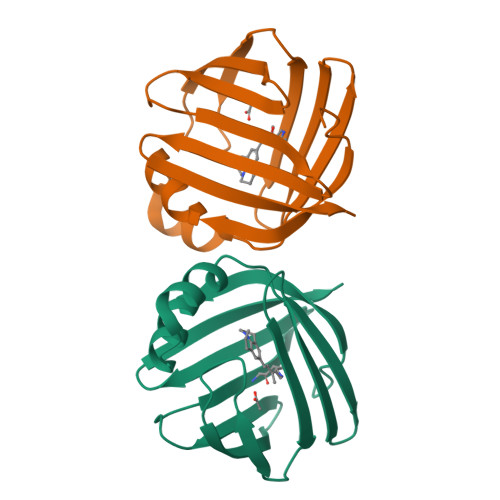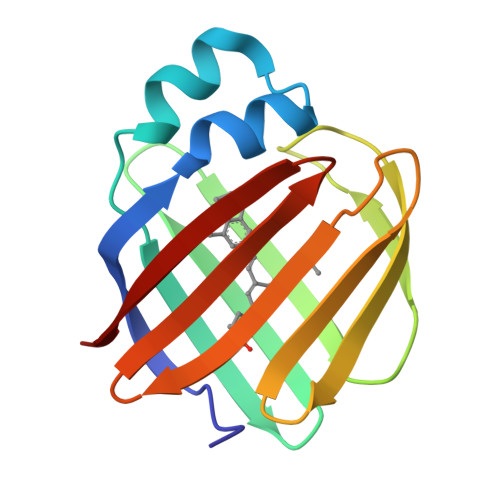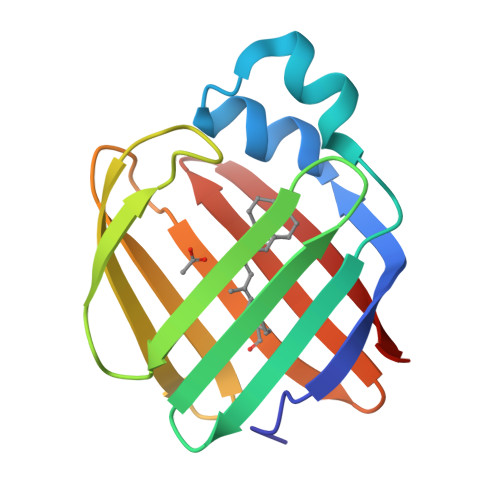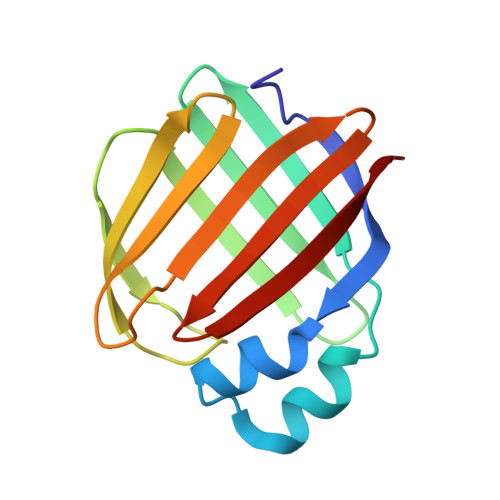A Genetically Encoded Ratiometric pH Probe: Wavelength Regulation-Inspired Design of pH Indicators.
Berbasova, T., Tahmasebi Nick, S., Nosrati, M., Nossoni, Z., Santos, E.M., Vasileiou, C., Geiger, J.H., Borhan, B.(2018) Chembiochem 19: 1288-1295
- PubMed: 29645331
- DOI: https://doi.org/10.1002/cbic.201800050
- Primary Citation of Related Structures:
6C7Z - PubMed Abstract:
Mutants of human cellular retinol-binding protein II (hCRBPII) were engineered to bind a julolidine retinal analogue for the purpose of developing a ratiometric pH sensor. The design relied on the electrostatic influence of a titratable amino acid side chain, which affects the absorption and, thus, the emission of the protein/fluorophore complex. The ratio of emissions obtained at two excitation wavelengths that correspond to the absorption of the two forms of the protein/fluorophore complex, leads to a concentration-independent measure of pH.
Organizational Affiliation:
Department of Chemistry, Michigan State University, East Lansing, MI, 48824, USA.





















